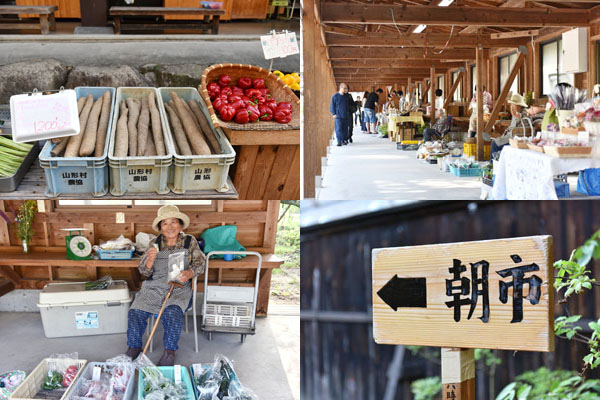A Tanka Poem-Inspired Breakfast: Elegance in Every Dish
Aug 05,2016
A Tanka Poem-Inspired Breakfast: Elegance in Every Dish
Aug 05,2016
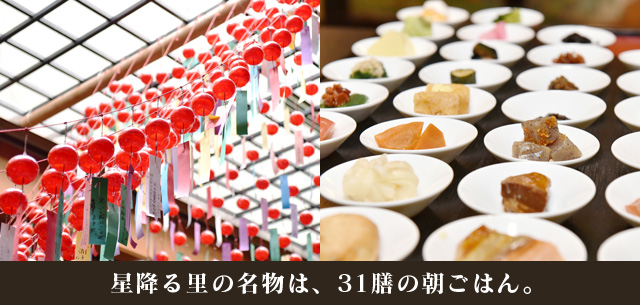
The village of Achi at the southern end of Nagano Prefecture bordering Gifu is a small community in the mountains renowned for Hirugami Hot Spring on the Achi River, a tributary of the mighty Tenryu River. The spa’s alkaline waters with their high pH are known for their skin-rejuvenating benefits.
Achi shot to national fame when it was declared to have Japan’s best star-filled skies. In 2006, as a result of continuous observation of the nighttime skies nationwide, the Ministry of the Environment named it the number one place in the country to see the stars shining, triggering an influx of visitors from all over Japan.
One of Hirugami Hot Spring’s premier inns, Sekitaitei Ishida, is renowned for something else as well: its breakfast of thirty-one dishes, one for each of the thirty-one syllables that make up a tanka poem.
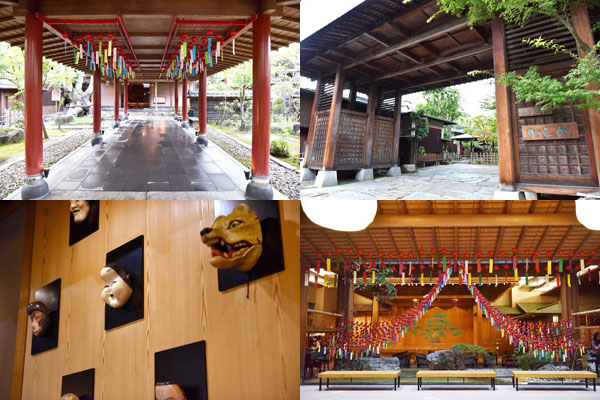

This breakfast consists of twenty-nine small plates of different foods served on a custom-made tray, plus rice and miso soup. I’d heard of it, but when I actually saw it, it was truly a sight to behold.
Uppermost row from left:
Tamagoyaki omelet made with Shinshu Ogon chicken eggs, umeboshi, tomato, cucumber with moromi miso, Japanese spinach salad, grapefruit jelly, kiwi, orange.
Second row from left:
Ganmodoki tofu fritter, shrimp balls wrapped in cabbage, carrot, deep-fried tofu made with spring water from the local Sairaiji temple, pickled daikon wrapped in perilla leaf, lightly pickled eggplant, pickled baby turnip, nozawana pickled in autumn.
Third row from left:
Grilled trout marinated in sweet white miso, stewed cubes of brand-name Chiyogenton pork, konjac, nori boiled in soy sauce, shijimi clams boiled in soy sauce, small fish simmered with Japanese pepper, kelp boiled in soy sauce.
Fourth row from left:
Tuna with grated yam, salted and fermented squid viscera, salted cod roe spiced with red pepper, kamaboko fish cake, pickled wasabi from Azumino, jellyfish in vinegar, and rice and miso soup.
It’s quite a task just to list all the dishes, let alone actually prepare them.
“It all started eight years ago, when the previous president suggested we create a breakfast full of surprises to delight our guests. I was dead against the idea. I thought we couldn’t possibly prepare that many dishes first thing in the morning. But the previous president said we could do it if we tried, and he was right!” [Laughs.]
So explains head chef Osada Masatoshi . A regular breakfast consists of about eighteen items. The Tanka Breakfast has 70 percent more. It features an abundance of locally produced meats and vegetables seasoned in the Kansai style, and it’s low in salt.
“The bottom row comprises raw items, the next row comprises grilled items, and the next comprises stewed or boiled items. The uppermost row consists of fruit and other light-tasting items. If you enjoy a drink in the morning, there’s a nice selection of delicacies to accompany your drink. You can start from the bottom row and work your way up from there. What’s the hardest part of making this breakfast? Well, naturally it’s a lot of work preparing each dish. We also take care that nothing overlaps with the previous evening’s late-night snacks. And we arrange the dishes with the interplay of colors in mind.”
For someone like me who usually has at most two or three items for breakfast, that’s an incredibly exciting prospect. You eat one item and then take a mouthful of rice before going on to something else with a different mouthfeel and flavor. It’s an infinite loop of culinary delights.
“Recently we get many young couples coming to see the stars. For us, the ultimate ideal would be for them to eventually get married and visit again with their kids. That’s another reason we’re committed to making the most alluring meal we can.”
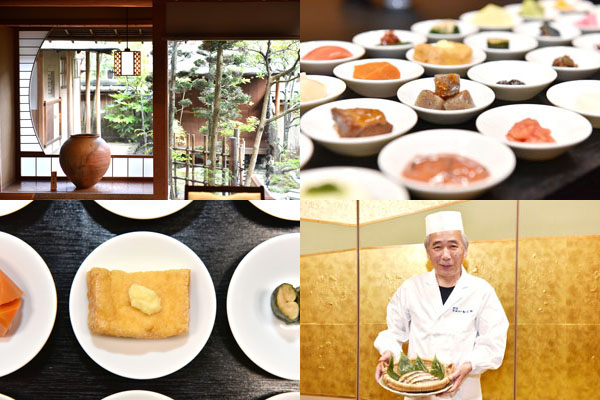
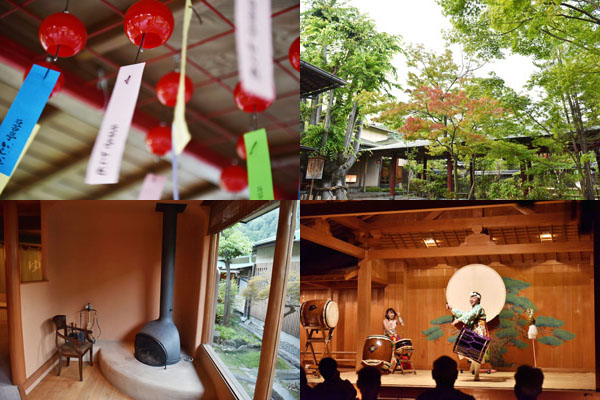
Sekitaitei Ishida is proud of its Japanese heritage. Guests are greeted by the magnificent Ebisu Bishamon gate and then pass along the carefully maintained flagstone walkway that traverses the luxuriant green garden. Inside, too, are numerous traditional Japanese features: verandahs with bamboo blinds, inner gardens, massive decorative boulders, and so forth. The spacious lobby even has a stage for Noh performances called the Shishinden. But why a Noh stage? Proprietress Itsumi Takako , the founder’s daughter, explains.
“The Noh stage was installed during renovations several years after the hotel was established (in 1984). It occurred to us at the time that we didn’t just want to run a money-making enterprise; we wanted to do something spiritually enriching both for the people who worked here and for our guests. We were looking for something that would make a difference to the community while burnishing our reputation as an inn. So we started researching the history of the area. We then discovered that there’s an old local legend that was retold in a Noh play.”
The Noh stage was built with the goal of turning the inn into a cultural hotspot. The Shishinden Banquet held each evening features performers of traditional arts of Shinshu (the historical name of Nagano) like the drums, the samisen, the shakuhachi, and traditional dance. Sekitaitei Ishida, incidentally, has nineteen rooms of four types (Yuki, Sakado, Tobi, and Enmai), and all of them are named after kyogen comedies.
When I visited, it was the season of the July Tanabata festival, and to honor the occasion, red wind-bells with strips of colored paper attached were on display at the entranceway and inside the building. There are five traditional seasonal festivals in Japan—the Festival of Seven Herbs, the Peach Festival, the Sweet Flag Festival, the Tanabata Festival, and the Chrysanthemum Festival—and the inn does something special to mark each. I must admit I never realized that there were five seasonal festivals.
Achi has a further tourist attraction. All 365 days of the year, there’s a farmer’s market from six (six thirty in the winter) to eight a.m. where local farmers sell their produce. Here you can find freshly harvested vegetables like tomatoes, eggplants, cucumbers, bell peppers, corn, and yams. You can find fruits like apples, peaches, and blueberries and pickles like wild udo and nozawana. There’s even rice, konjac, soba, freeze-dried tofu, adzuki bean jelly, and juice. It was more than worth getting up extra early to shop while chatting with the farmers at the stalls.
